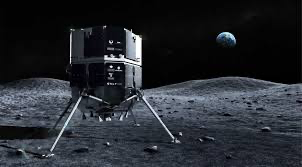CLPS heats up with ispace set to take an early lead
NASA’s CLPS (commercial lunar payloads services) has been a divisive program for many years, set up after the cancellation of the Lunar Prospector mission in 2018, it has the aim of using private companies to send science payloads to the lunar services with multiple landers and rovers. So far 8 missions have been contracted and the first mission from Japans ispace is scheduled to launch on the 30th of November at the time of writing.
This is a risky move by NASA, trusting private companies to achieve the lofty goal landing a probe on the surface of the Moon, so far only a feat that has been achieved by the might of 3 major countries: USA, Russia and China. The program offers many benefits with cheaply sending science packages to lunar surface in order to support the ambitious Artemis program that aims to send humanity back to the moon for the first time in 50 years. However many have questioned the technical prowess of private industry to achieve this feat.
However, if this program were to succeed, it would represent the greatest leap in humanities exploration of the moon since Apollo 11. This is because with cheap and fast access to the lunar surface, our nearest neighbour become so much more accessible and we are that much closer to creating a permanent settlement on another world.

Comments
Post a Comment